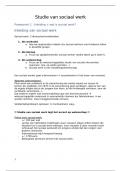Tentamen (uitwerkingen)
Summary Marketing Communication Exam
This is a summary for the exam of marketing communication (part B), which is a specialization in the master persuasive communication. It has all the articles you need to read and the chapters of the Belch & Belch book.
[Meer zien]














